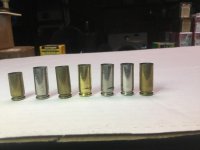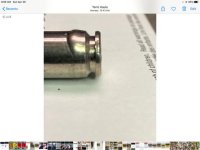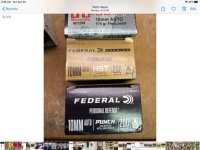Over the many years of shooting, I've ran into different brass, reloading die sizer specifications, and shooting different pistol/revolver combinations that caused issues.
Back in the 90's, I was shooting a Model 52 and a Model 15 (that I installed a 6" barrel). After a while, I had trouble getting the fired cases out of the Model 15.
The Model 52's barrel chamber at the back end is greater than the revolver's straight cylinder. The RCBS sizer die would not take the fired Model 52 case and size it completely down all the way. I even ground a little off the RCBS sizer die on the bottom and it still didn't help.
I bought a set of Dillon 38 spl reloading dies and everything worked great after that.
So maybe in this case... A loose but in spec Model 52 barrel, a tight but in spec Model 15 cylinder and a sizer die that didn't completely size the fired Model 52 case.
Now to reloading in the 2020's. There was a time when you picked up once fired brass and it was Federal, Remington or Winchester. Now you pick up once fired brass from companies you never heard of and come from countries that your not quite sure where they are on a globe. The thickness, length, primer pockets and overall quality varies from brand to brand.
Next reloading issue I've run into. Coated bullets.
Where pre-Covid I went thru a case of coated bullets a month and never had any problems. Now after experiencing several pistol malfunction issues, oversized reloading bullets were the cause. 45 bullets sized at .453" and 9mm bullets sized .357".
Where these .357" bullets will work fine in a Federal, Blazer or Winchester case, they might not work in a CBC or Aguilla case.
As a revolver shooter from the 80's, to a Glock shooter over the past few years, I got to like the Glocks. My Glock 34 is the older two pin model and Its barrel chamber is tighter the my wife's Dan Wesson Pointman 9.
Reloading sizer dies are not equal, brass from different manufactures is different. Coated bullet manufactures might send you bullets a little larger than specified.
You might have a sizing die not doing its job. I use Dillon dies, probably because I reload on a 550. Many other competitive shooters use Lee dies. Over the years I've acquired RCBS dies and would never use the sizer die after different issues I've had with them over the years in different calibers. I'm sure there's a ton of RCBS users out there, but for me, one issue on a timed stage costs me points in a match.




